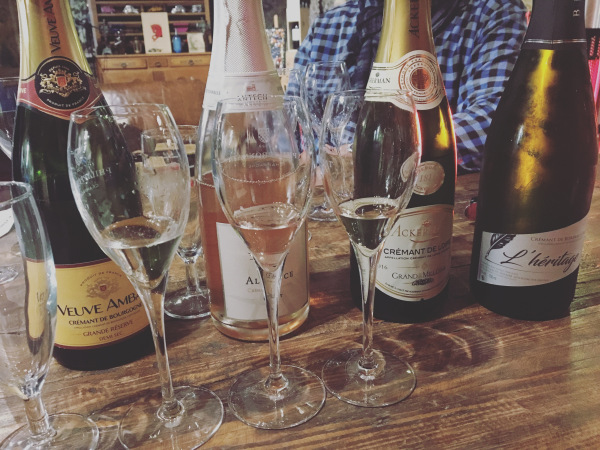
Consider crémant sparkling wine as a non-sophisticated entry point to any gathering—whether barbecue, picnic, dinner or party. It’s an opening act, the liquid equivalent to a bowl of pretzels before dinner. The juice is clean, zippy, low in alcohol and lively. It’s like fresh orange juice before breakfast or a rinse off shower before plunging into a swimming pool or a one-page prologue that begins a novel; it’s the vestibule entry way leading into a castle. Crémant is more passageway than place to linger.
The French word crémant (pronounced CRAY-mon) refers to sparkling wine that is made in the same way as champagne. A secondary fermentation takes place in the bottle rather than (as with Prosecco) in a steel vat controlled for pressure and temperature.
‘Secondary fermentation’ means an extra dose of yeast and sugar are added before a bottle is sealed, allowing the generation of carbon dioxide fizz.

The word crémant was once used in the Champagne region to refer to sparkling wines made at lower pressures than champagne. These provided not a fizzy feel in the mouth as much as one that is creamy. Today that meaning has vanished; the word now refers to sparkling wines produced outside of Champagne.
Ten regions produce crémant, eight of which are in France, one in Luxembourg and one in Belgium. The newest French appellation for this drink—Crémant de Savoie—was established only in 2014, while that of Alsace was created in 1976 and that for Bordeaux in 1990. Crémant producing regions of France are: Bordeaux, Bourgogne (Burgundy), Loire, Savoie, Jura, Die, Limoux and Alsace. All appellations must use hand-picked grapes and juice must age at least nine months on the lees (which means keeping yeast in the barrel).
These sparkling wines are basically bargain bottles of effervescence; kick off cocktails for a delicious early event buzz.

Advantages of crémant over champagne include lower cost and flexibility—it can be made from a geographically more diverse range of grapes. Many regions producing this beverage include—as a base for whites—the two classic Burgundian grapes of Chardonnay (providing acidity, freshness and elegance) and Pinot Noir (providing structure and fruity aromas). Crémant regions not including these two grapes are Bordeaux, Die (in the Rhone Valley) and Savoie (in which Pinot Noir is not used, though Chardonnay can be). Crémants also include locally popular grapes, and many—such as Mauzac, Chenin Blanc and Aligoté—include aromas of apples and lemons, as well as other fruit.
To gauge the ease of access and price, at a local supermarket (and at one nearby winery), I purchased crémants from four regions of France, then sampled them with a colorful array of characters at the local wine bar: two are winery owners and one individual is not involved with the trade, but is a fiction author from Canada.
Their collective comments are below.
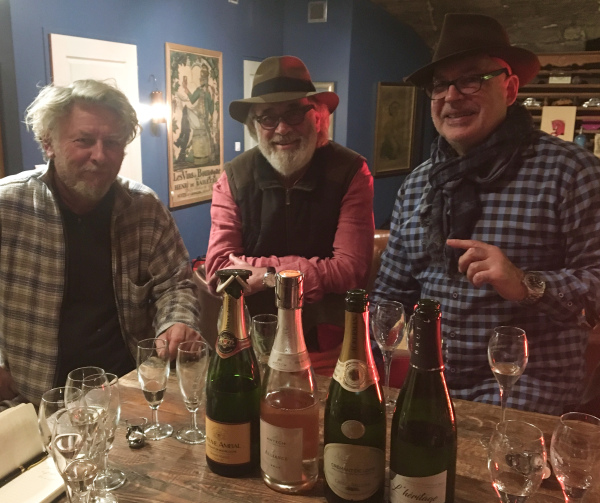
Cremant Bourgogne (Burgundy).
Veuve Ambal. Grande Réserve. Demi-Sec. 12% alcohol.
Euros 7.95 ($9.00)
The four included grape varieties are Chardonnay, Pinot Noir, Aligoté and Gamay. Whereas Aligoté is acidic and adds structure and taste (including lemon and green apples) Gamay is the Beaujolais grape that bursts with fresh fruit flavors.
I considered this demi-sec as a gorgeous and sweet opener for the evening.
Les – Etalon Rouge winery proprietor:
‘Nutty and dry for a demi-sec. Includes tastes of ripe yellow peaches.’
David – Canadian author:
‘Tastes of strawberries. Good desert wine.’
Ben – La Garagiste winery proprietor:
‘Flavorsome, but a bit sweet.’
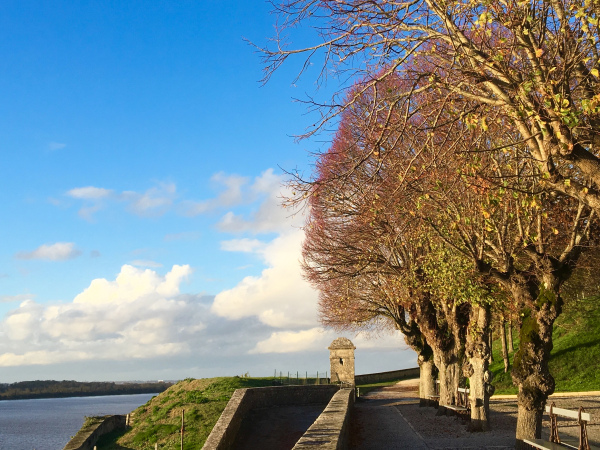
Cremant Limoux (rosé).
Antech Alliance. Brut. 12% alcohol.
Euros 8.55 ($9.70)
This includes Chardonnay, Pinot Noir, Chenin Blanc and Mauzac. The last grape, also known as ‘blanquette,’ is used in another regional sparkling wine known as ‘blanquette de Limoux,’ which was supposedly the first sparkling wine ever made, predating even champagne.
I enjoyed the subtle tastes of lemon and nuts.
Les – Etalon Rouge winery proprietor:
‘Stunning color, not pink or apricot but in between. Beautiful tiny bubbles. Dry off the tongue, but with a beautiful finish that lasts.’
David – Canadian author:
‘Flavorful but subtle, silky and refreshing.’
Ben – La Garagiste winery proprietor:
‘Very lemony and fresh.’
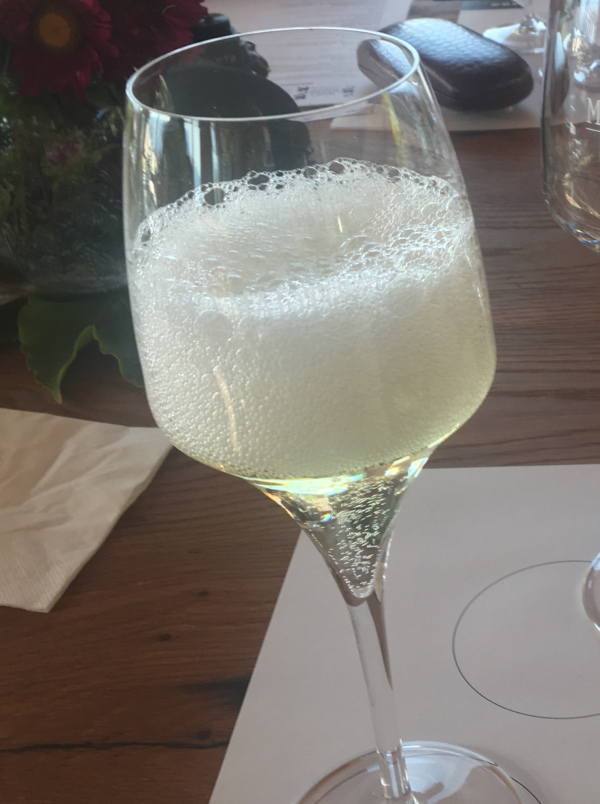
Crémant de Loire.
Ackerman Grand Millesme 2016. 11.5 % alcohol.
Euros 7.99 ($9.05)
The grapes include Chardonnay, Pinot Noir and Chenin Blanc. The Chenin Blanc is the locally prevalent white wine grape of the Loire Valley, and offers high acidity, which is good for sparkling wine. Rosé crémant from the Loire Valley can include Cabernet Sauvignon, Cabernet Franc and also locally available pineau d’Aunis.
I enjoyed the citrus taste, and appreciated how the wine developed and improved in the glass after five minutes.
Les – Etalon Rouge winery proprietor:
‘Elegant and smooth; best yet.’
David – Canadian author:
‘Wildflowers, blackberries and lemon.’
Ben – La Garagiste winery proprietor:
‘Beautiful and notable effervescence, reminder of pop rocks candy. Sharp, but balanced on the tongue.’
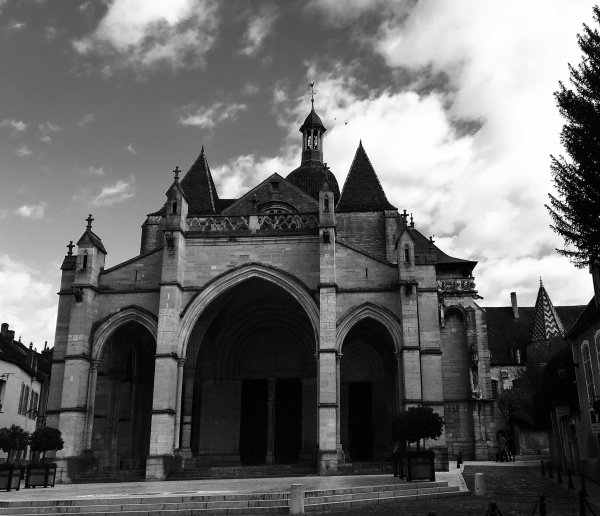
Crémant de Bordeaux.
Clos du Notaire L’héritage. 12% alcohol.
Euros 7.50 ($8.50)
Crémants from Bordeaux are made from the same grapes as are used for red and white blends. This particular crémant from Bourg is unusual because it includes only one white grape—Semillon. This grape is today a darling of Australia’s Hunter Valley, and also once covered 90 percent of white grape vineyards in South Africa in the early 1800’s (today it represents only one percent of grapes found in the cape region of South Africa).
For me this has heft, structure and power, as well as aromas and tastes of lime, nuts and pineapple. It is not as complex as that from the Loire.
Les – Etalon Rouge winery proprietor:
‘Ebullient sparkler that has oomph. Reminds you that it is in your mouth. Extremely dry finish; sort of melts away.’
David – Canadian author:
‘Pomegranate and vanilla, very spicy. A lot of character and punch.’
Ben – La Garagiste winery proprietor:
‘This stays in the mouth longer than any others.’
These observations highlighted the truth that a demi-sec is notably sweeter than a Brut, that lemon certainly is a characteristic of Mauzac grapes, that Semillon has commanding structure and body and that Chenin Blanc, combined with Chardonnay and Pinot Noir, can produce distinctly complex wines.
The range of quality and style for crémants is wide and offers much to appreciate for little price: blasts of fruit, commanding power, rich complexity and also subtle shades of flavor—depending on which bottle you choose, and from which region. As corks pop during the holiday season, offer your friends something different with crémant.
^ ^ ^ ^ ^
My latest Forbes pieces are here, and include one on the digital marketing of champagne and the physics of bubbles, on why Cru Beaujolais wines made this year are looking powerful, on hunting for a war ancestor in central France, and why the city of Beaune is a good base for exploring Burgundy.
Thanks, as always, for tuning in again!
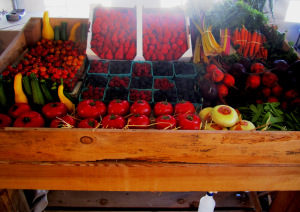
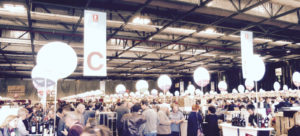
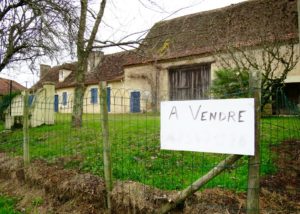
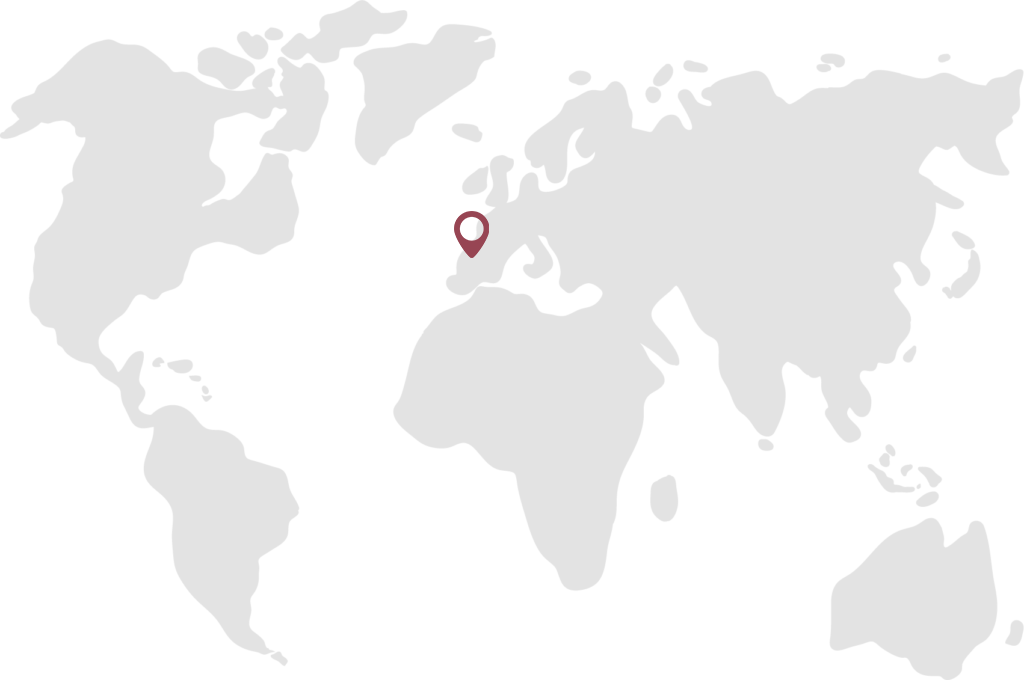
vinoexpressions
27 Nov 2018My friend and Wine Guru Julien Pouplet wrote (from the Jurançon):
Adiù Tom! If it’s not already done, I suggest you to try Crémant de Bordeaux by Jean-Louis Ballarin. Probably the only one in the category you can enjoy without risking an hole in your stomach.
vinoexpressions
27 Nov 2018My friend Sabina from London wrote:
You could not have timed sending this any better!
I now know what to get for my Christmas Drinks party!
vinoexpressions
27 Nov 2018Friend Chana from Orange County, California, wrote:
I know you say you don’t have a lot of readers, but those of us that are following and reading, really love your writing and photos. It’s so tasteful and artful and it makes me want to indulge.
Just thought I would share 🙂
vinoexpressions
27 Nov 2018Brother Pete from Denver wrote –
Sounds very good. Wish I had a glass . . .
Glugger
27 Nov 2018Lovely Crémant o’clock picture! From a hotel balcony in Montreux, perchance?
vinoexpressions
27 Nov 2018Yes! From the Glion Institute, actually … No, not really within crémant territory (which they don’t produce in Switzerland) but it was too irresistible a photo to deny using to herald the onset of cocktail hour …